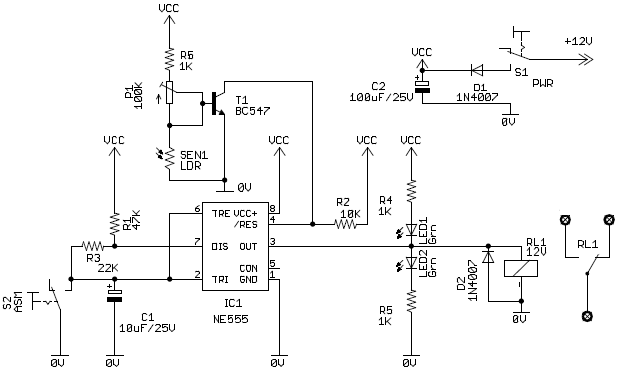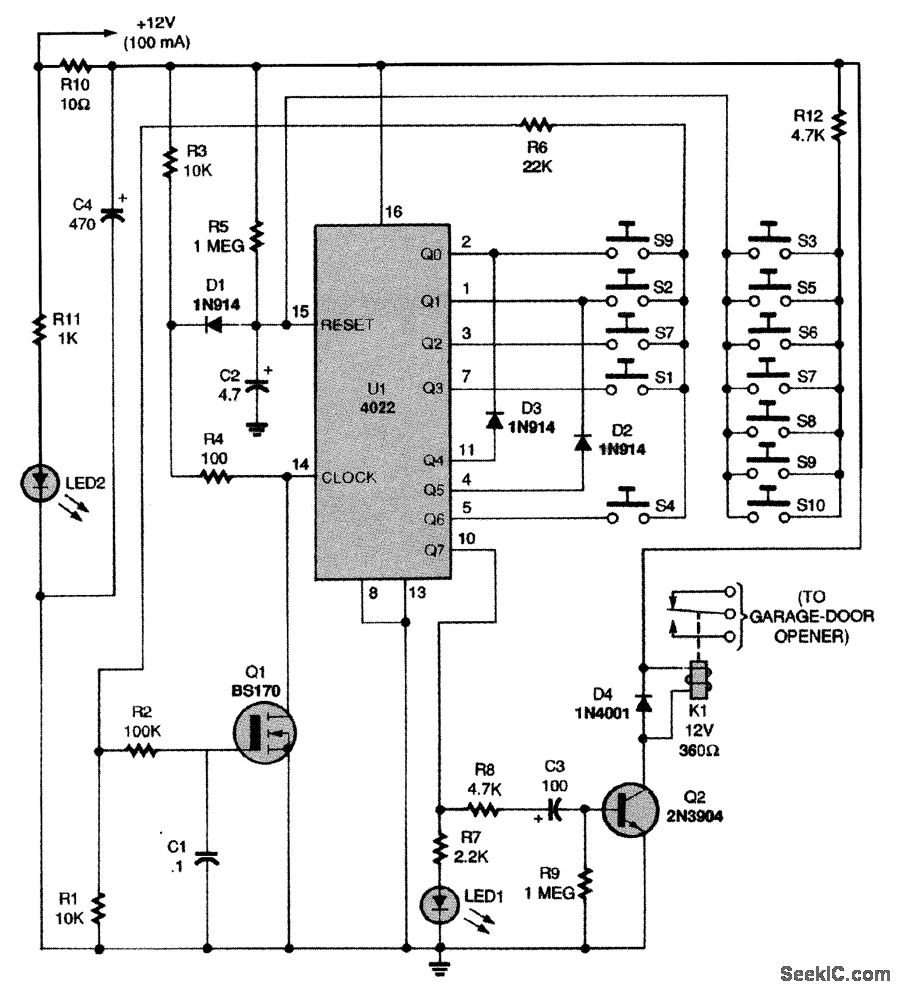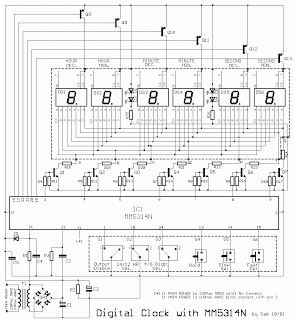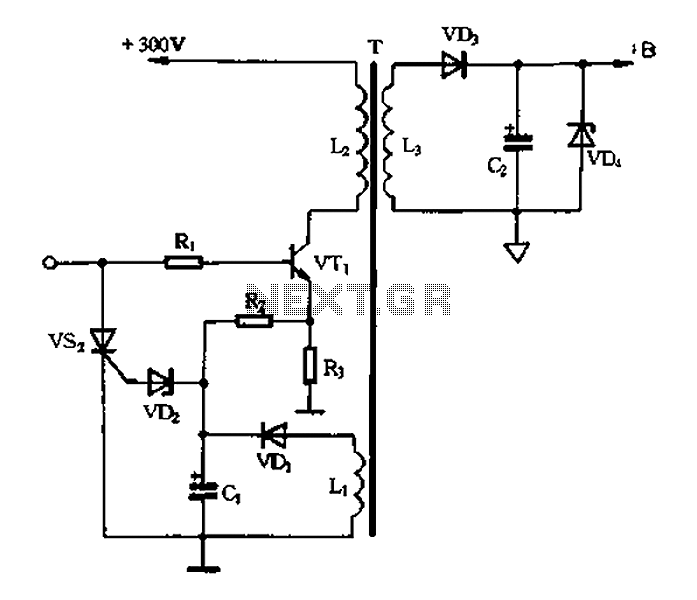
Color TV chroma processor with ACC color killer and an injection lock reference system
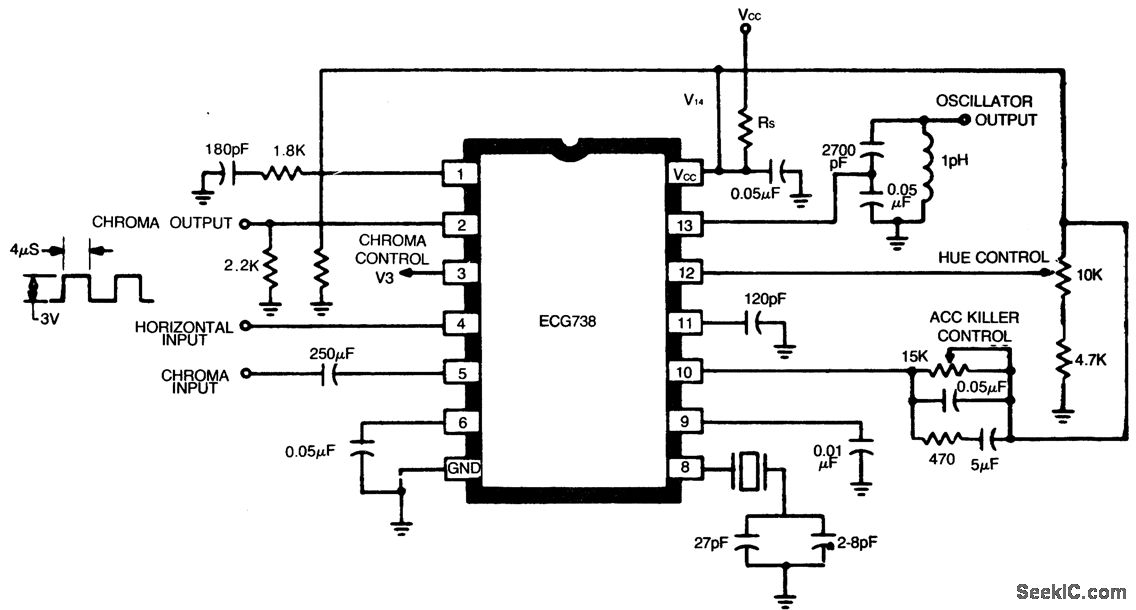
Color TV chroma processor with automatic color control (ACC), color killer, and an injection lock reference system. The typical power supply voltage is between 9 to 11.5 volts. The hue control range is 100 degrees. The oscillator output signal is 180 mV peak-to-peak (PMS).
The color TV chroma processor is a critical component in the color television system, responsible for processing the chrominance signals to produce accurate and vibrant colors on the screen. The automatic color control (ACC) feature adjusts the color balance automatically, enhancing the viewing experience by compensating for variations in signal quality or lighting conditions. The color killer function is designed to mute the chroma output when a monochrome signal is detected, preventing unwanted color artifacts and ensuring that the display remains clean and clear.
The injection lock reference system stabilizes the oscillator frequency, which is essential for maintaining consistent color reproduction. This system typically utilizes a phase-locked loop (PLL) configuration, ensuring that the oscillator remains locked to a reference signal, thus minimizing drift and variations in the output signal.
The specified power supply voltage range of 9 to 11.5 volts indicates the operating conditions required for the processor to function efficiently. This voltage range is typical for integrated circuits, allowing for compatibility with standard power supplies used in consumer electronics.
The hue control range of 100 degrees provides flexibility in adjusting the color tones displayed on the television. This control allows users to fine-tune the color settings to their preference, enhancing the overall viewing experience.
The oscillator output signal, specified at 180 mV peak-to-peak (PMS), indicates the strength of the signal being generated by the oscillator circuit. This output is crucial for driving subsequent stages of the chroma processing circuit, ensuring that the chrominance information is accurately conveyed to the video signal output.
Overall, the design and functionality of the color TV chroma processor are pivotal in delivering high-quality color television images, making it an essential component in modern television systems.Color TV chroma processor with ACC, color killer, and an injection lock reference system. fypical power supply voltage is 9 to 11. 5 volts. Hue control range is 100 degrees. The oscillator output signal is 180 mV PMS (courtesy GTE Sylvania Incorporated). 🔗 External reference
The color TV chroma processor is a critical component in the color television system, responsible for processing the chrominance signals to produce accurate and vibrant colors on the screen. The automatic color control (ACC) feature adjusts the color balance automatically, enhancing the viewing experience by compensating for variations in signal quality or lighting conditions. The color killer function is designed to mute the chroma output when a monochrome signal is detected, preventing unwanted color artifacts and ensuring that the display remains clean and clear.
The injection lock reference system stabilizes the oscillator frequency, which is essential for maintaining consistent color reproduction. This system typically utilizes a phase-locked loop (PLL) configuration, ensuring that the oscillator remains locked to a reference signal, thus minimizing drift and variations in the output signal.
The specified power supply voltage range of 9 to 11.5 volts indicates the operating conditions required for the processor to function efficiently. This voltage range is typical for integrated circuits, allowing for compatibility with standard power supplies used in consumer electronics.
The hue control range of 100 degrees provides flexibility in adjusting the color tones displayed on the television. This control allows users to fine-tune the color settings to their preference, enhancing the overall viewing experience.
The oscillator output signal, specified at 180 mV peak-to-peak (PMS), indicates the strength of the signal being generated by the oscillator circuit. This output is crucial for driving subsequent stages of the chroma processing circuit, ensuring that the chrominance information is accurately conveyed to the video signal output.
Overall, the design and functionality of the color TV chroma processor are pivotal in delivering high-quality color television images, making it an essential component in modern television systems.Color TV chroma processor with ACC, color killer, and an injection lock reference system. fypical power supply voltage is 9 to 11. 5 volts. Hue control range is 100 degrees. The oscillator output signal is 180 mV PMS (courtesy GTE Sylvania Incorporated). 🔗 External reference

